Take a step back in time as you enter the monumental Great Court – the heart of The University of Queensland’s St Lucia campus. With its inviting lawn, historical buildings and quirky carvings, the Great Court has been a popular meeting place for decades.
When designed in the mid-1930s by Queensland Government architects Hennessy, Hennessy & Co, the Great Court was envisioned as a modern take on the traditional quadrangles of monasteries and universities in Europe.
It was to be “original in conception, monumental in design, and embodying the Australian spirit of art with English culture”.
The centrepiece of the Great Court, the Forgan Smith building, was the first to be constructed when the University relocated from Old Government House to St Lucia.
The foundation stone was laid by Queensland Premier the Hon William Forgan Smith on 6 March 1937, with construction beginning the following year.
While sandstone was a popular material for monumental buildings at the time, what made the Great Court unique was the deliberate choice to use multiple colours and shades of the Helidon freestone.
This results in a patchwork-like effect of purples, lavenders, creams and browns that looks especially attractive after rain.
The precinct played an important role in World War 2, when the Allied Land Forces in the South West Pacific, led by General Sir Thomas Blamey, used the Forgan Smith Building as their headquarters. A bronze plaque commemorating this period can be found in the Forgan Smith tower.
The Great Court took more than 40 years to complete and was added to the Queensland Heritage Register in 2002.
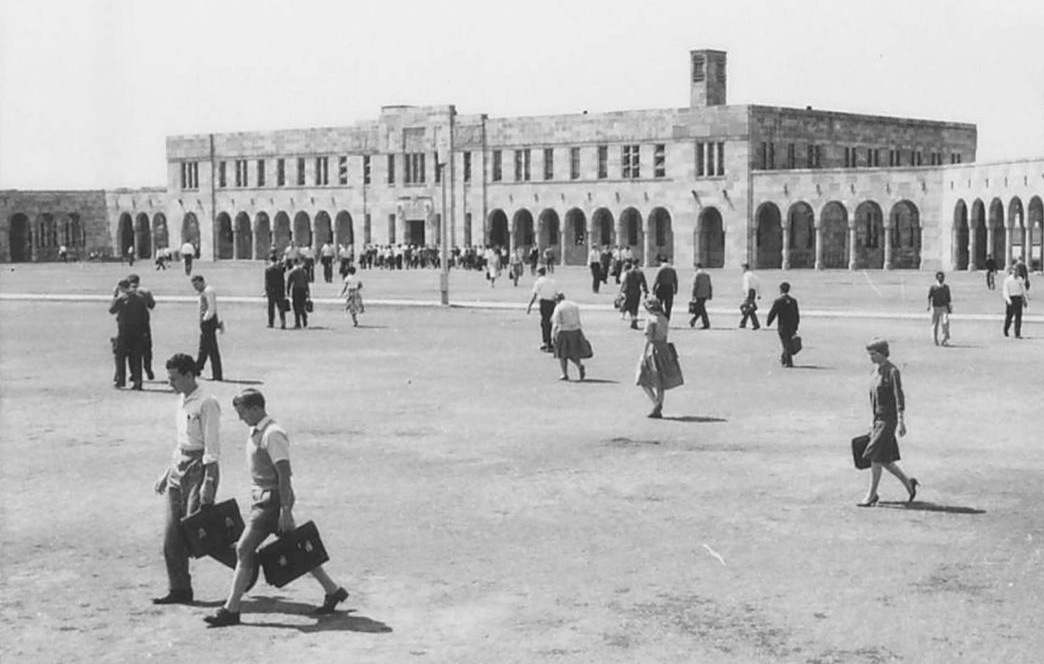
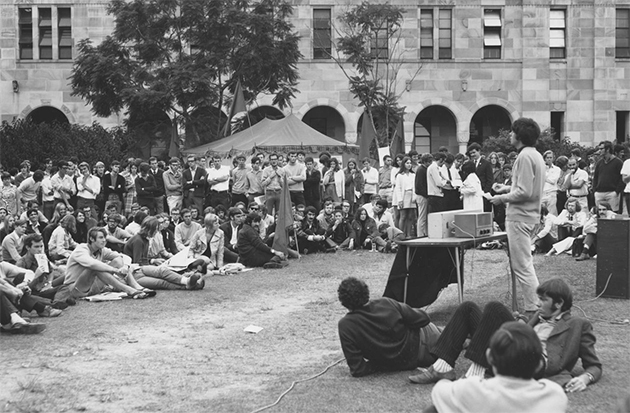
Timeline of Great Court construction
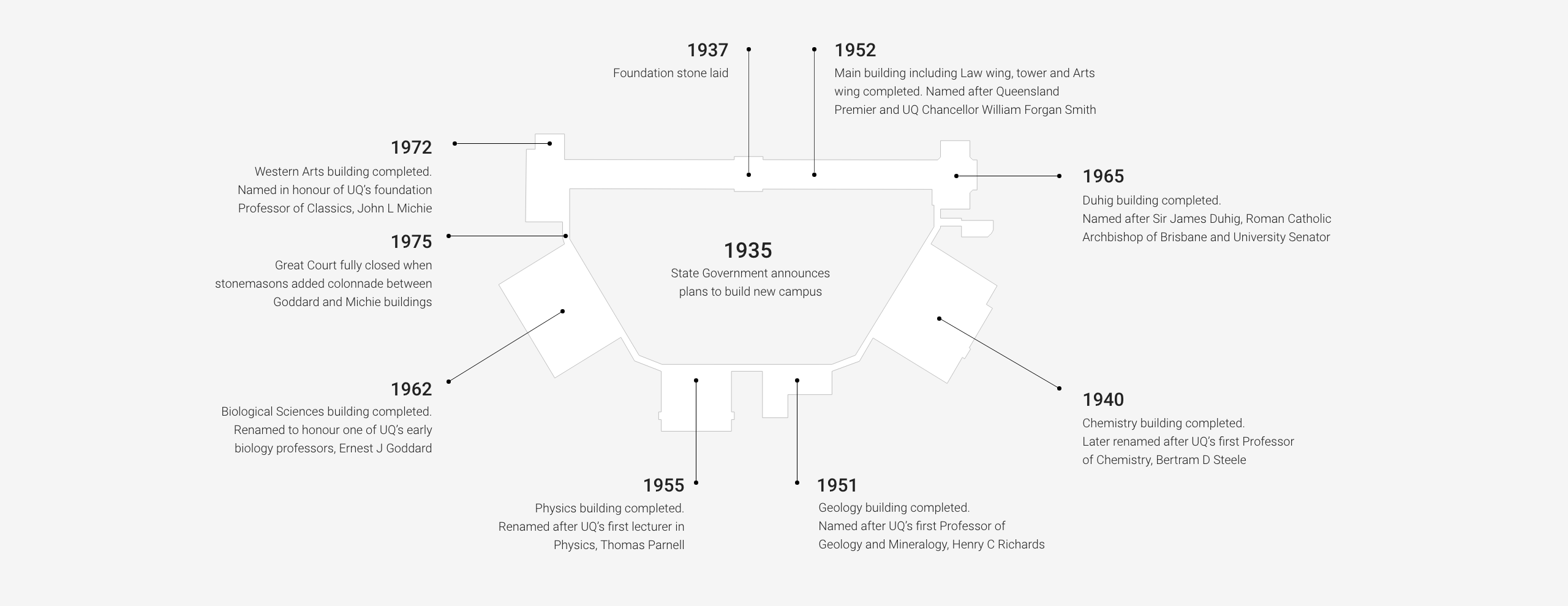
More than 1,200 stone carvings can be found on the walls and columns of the Great Court, comprising a variety of subjects and artistic styles.
In 1939, the original planners engaged the first University Sculptor, John Theodore Muller (1873–1953), to “alleviate the severe simplicity of the outer walls” of the Great Court.
Muller and his associates created several hundred carvings in a range of styles, depicting events from Queensland’s history; flora and fauna; Indigenous life; and coats of arms – as determined by the architects.
Scholarly figures from history were also crafted, including William Shakespeare, Charles Darwin, Confucius and Plato.
Following Muller’s death in 1953, work on the Great Court carvings languished for more than two decades.
Then in 1976, the University Senate ran a competition to select a new University Sculptor and Dr Rhyl Kingston Hinwood AM (1940–) won the prize. Over the next 35 years, she too completed several hundred diverse carvings, mostly of her own design.
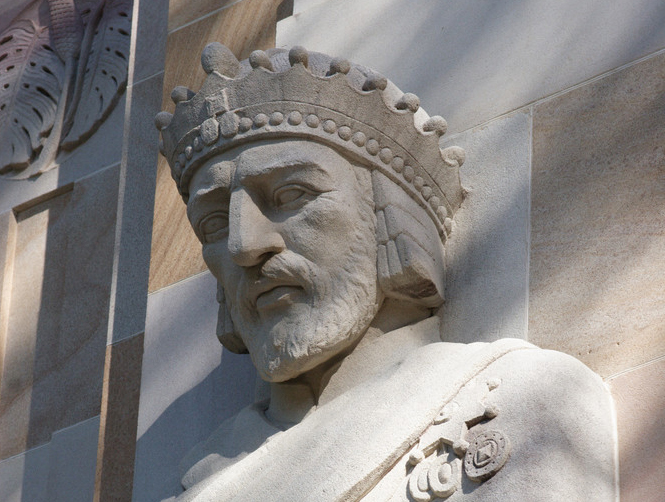
Grotesques
Possibly the most popular of all the carvings, these projecting sculptures on the cloister walls were created to introduce an element of humour to the Great Court and include UQ academics, fictional literary characters and other mythical creatures (note: despite some having open mouths, the grotesques are not gargoyles, which are water spouts for carrying away rainwater).
Friezes
Decorative bands or features on a wall, mostly bas-relief (low-relief), these carvings depict Indigenous life, historical scenes, scientific pioneers and noted literary authors.
Full-shields
Located at the top of the three- or four-sided columns within the cloisters, these generally represent university coats of arms.
Half-shields
Located on the three-sided columns within the cloisters, these carvings depict Queensland flora.
Arch-carvings
Located on the outside walls of the cloisters, facing the Great Court lawn, these low-relief carvings depict Queensland flora and fauna.
Roundels
Decorative panels, round in form, these depict mostly flora and fauna, but also the heads of some significant figures.
Statues
These high-relief three-dimensional carvings, either free-standing or attached to walls, are of famous scholars, writers and scientists, as well as books.
Inscriptions
These are words carved into the sandstone that depict academic quotations or the names of significant scholars in history.
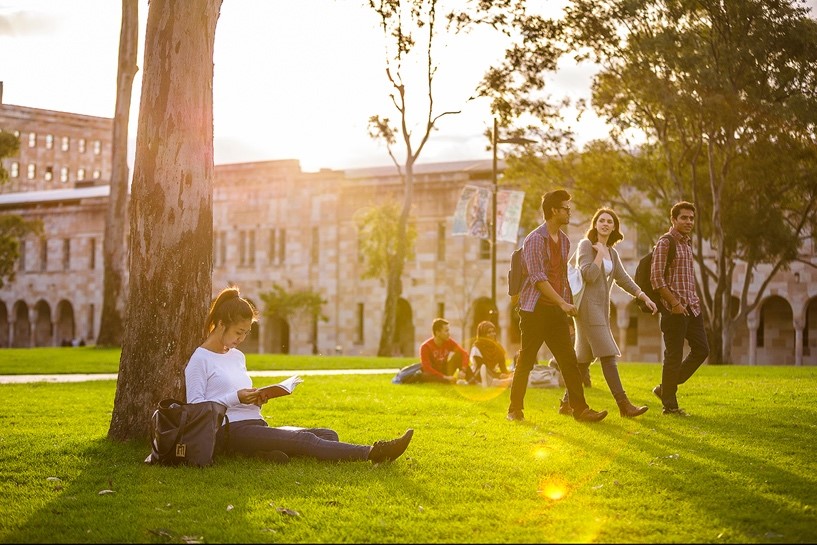
Learn more about the Great Court
- Download a map of the Great Court precinct (PDF, 157KB), which includes a list of every carving, its location and style.
- Download Carving a history: a guide to the Great Court (PDF, 3.3MB) and learn how to easily navigate this heritage-listed landmark.
- Read A sculptor’s vision: creating a legacy in stone (PDF, 6MB) eBook, written by UQ’s second University Sculptor, Dr Rhyl Hinwood AM, and explore the trials and tribulations that went in to producing a three-dimensional interpretation of Queensland’s natural and social history; learn a little about the life of an artist in the process.
- Learn about the annual Great Court Race, based on Cambridge University’s Great Court Run as immortalised in the film, Chariots of Fire.
- Buy the University of Queensland Press publication Courting Blakness: Recalibrating Knowledge in the Sandstone University, which accompanied a 2014 Great Court art exhibition.
